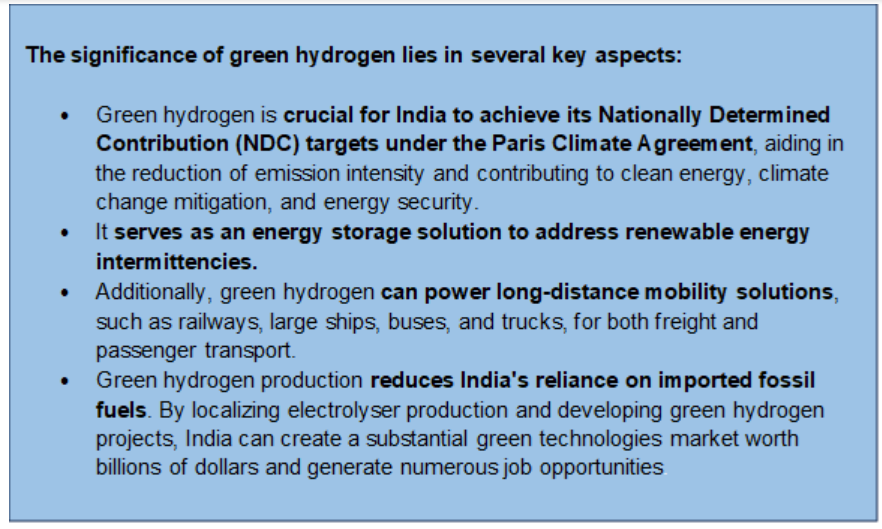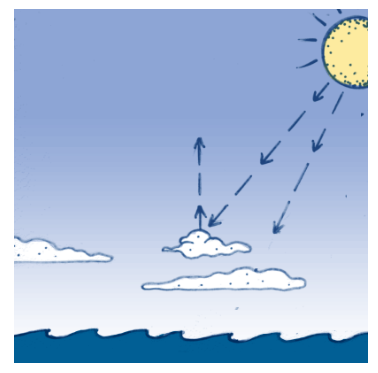Wednesday, 1st November 2023
Israel-Hamas Conflict and its Global Impact
In News
Israel's ground offensive in the Gaza Strip to eliminate Hamas has heightened the conflict and raised concerns about its impact on the global economy in the post-conflict phase.
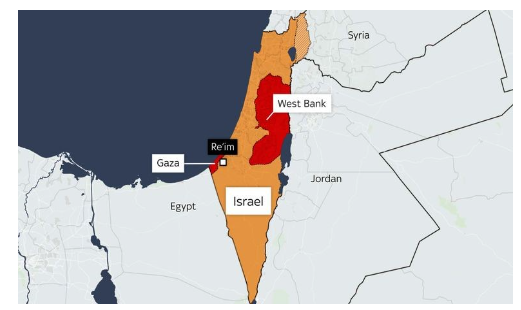
What are the potential outcomes and impacts of the conflict?
Exploring three conflict scenarios and their potential consequences:
- Localised scenario
- The conflict is primarily confined to the Gaza Strip, with minimal spillover effects.
- The global economy may not be directly impacted, but it poses concerns for a world economy striving to overcome various challenges as central banks grapple with the delicate balance between managing inflation and averting economic downturns.
- The humanitarian crisis in Gaza could worsen, with a notable death toll surpassing 8,000.
- A broader regional conflict scenario
- Involving Iran-backed militant groups in Lebanon, Syria, and the Houthis in Yemen.
- It could lead to increased violence in multiple regional areas, resulting in heightened instability and conflict.
- Oil prices may surge to the mid-USD 90s, surpassing the current USD 90 per barrel, leading to higher global inflation and potentially diminishing global economic growth by 0.3% points.
- The most extreme scenario
- It anticipates a full-scale war between regional powers, Israel and Iran, possibly drawing major world powers like the United States, China, and Russia into the conflict.
- This could disrupt trade and the global crude oil supply in the Middle East, affecting regional countries and their trading partners.
- With over 20% of the world's crude supply coming from West Asia, the conflict could substantially elevate crude oil prices to USD 150 per barrel.
- Even with potential assistance from Saudi Arabia and the UAE, if they do not align with Iran, oil shipments might face challenges passing through the Strait of Hormuz, a critical 48-kilometer shipping chokepoint through which nearly one-fifth of the world's total oil production transits.
- Global inflation could surge to approximately 6.7% in 2024, potentially causing a nearly 2% point slowdown in global economic growth and raising the specter of a worldwide recession, which could significantly impact countries like India and the US.
|
UPSC Previous Year Questions Prelims (2017) Q. Mediterranean Sea is a border of which of the following countries?
Select the correct answer using the code given below: (a) 1, 2 and 3 only Ans: (c) Prelims (2015) Q2. Which one of the following countries of South-West Asia does not open out to the Mediterranean Sea? (2015) (a) Syria Ans: (b) Prelims (2018) Q3. The term “two-state solution” is sometimes mentioned in the news in the context of the affairs of (a) China Ans: (b) Mains (2018) Q. “India’s relations with Israel have, of late, acquired a depth and diversity, which cannot be rolled back.” Discuss. |
Source: IE
Complex Landscape of E-Commerce
In News
India voiced concerns at a recent WTO meeting in Geneva about the absence of a clear definition for e-commerce trade in goods and services.
What are the key areas of contention in the realm of e-commerce?
- Developed and developing nations have differing views on e-commerce, particularly in the context of goods and services.
- This complicates WTO policy-making, especially in cases like streaming services.
- WTO members have extended the Moratorium on customs duties for electronic transmissions since 1998.
- The lack of a clear framework for e-commerce services creates uncertainty and concerns about fair competition.
- India stresses the need for a clear definition, especially in distinguishing between digital goods and services.
- The growth of cryptocurrencies challenges the current WTO e-commerce framework, leading to a need for discussions on classifying them as electronic transmissions.
About E commerce
E-commerce, as defined by the World Trade Organization, encompasses the electronic production, distribution, sale, and delivery of goods and services, which includes digitally transmitted products like books, music, and videos.
E-commerce offers several advantages:
- It allows customers to shop at any time and from anywhere, offering unparalleled convenience and access to a wide range of products and services.
- Access to consumer data empowers businesses with valuable information to understand customer behavior, preferences, and trends. This, in turn, enables targeted marketing and improved customer experiences.
- E-commerce platforms host a diverse array of products and services in one place, facilitating easy comparisons and choices for customers.
- Multiple payment gateways and options are available, ensuring secure and hassle-free transactions for both businesses and customers.
- Unlike physical stores, e-commerce platforms operate around the clock, providing continuous access to products and services for customers worldwide.
- E-commerce enables businesses to access a global market without the limitations of physical locations, expanding their customer base.
|
Initiatives by the Indian government concerning e-commerce |
|
Source: ET
Self-Reliance in Cybersecurity
In News
What is Self-Reliance in cyber security and why it is important?
- Self-reliance in cybersecurity pertains to a nation's ability to independently develop and maintain its own cybersecurity capabilities, technologies, and expertise, reducing reliance on foreign sources for protection of digital infrastructure and data.
- This is crucial for national security, as critical infrastructure and modern military operations rely on digital technology.
- It also addresses geopolitical concerns by minimizing security risks associated with over-dependence on foreign technology, particularly from countries with strained relations.
- Achieving self-reliance promotes technological independence, innovation, and control over the technology supply chain, enhancing cybersecurity resilience.
Difficulties concerning cybersecurity in India
- Private sector investments in IT, electricity, and telecom have often prioritized profit over cyber attack preparedness, raising concerns about the lack of investment in cybersecurity infrastructure.
- India lacks a separate procedural code for investigating cyber-related offenses, which can hinder effective handling of cybercrimes.
- Many cybercrimes have a trans-national nature, making the collection of evidence from foreign territories a complex and time-consuming process.
- India's digitalization efforts, including technologies like 5G and IoT, increase the vulnerability to cyber threats as more data and transactions move online.
- Cybercrimes related to cryptocurrencies are underreported due to limited capacity for solving such cases, and State cyber labs await recognition as 'Examiners of Electronic Evidence' by the Central Government, which is necessary to provide expert opinions on electronic data.
In what ways is India advancing in the development of technology?
- India is actively diversifying its supply chain partners in the technology sector to reduce reliance on Chinese manufacturers and enhance security.
- The government is committed to advancing 5G infrastructure, with 100 5G Use Case labs awarded to educational institutions across the country.
- India's focus on 6G technology and significant improvements in broadband speed underscore its ambition to lead in technological advancements.
- The country has made great strides in electronics and smartphone manufacturing, recognizing the importance of semiconductor manufacturing in the tech supply chain.
India's startup ecosystem has seen remarkable growth, with the number of startups increasing from around 100 before 2014 to approximately 100,000 today.
Cybersecurity initiatives
- International Level Initiatives
- United Nations (UN)
- The UN promotes international cooperation in addressing cyber threats.
- Initiatives like the Group of Governmental Experts (GGE) and the UN Open-Ended Working Group (OEWG) aim to establish norms for responsible state behavior in cyberspace.
- INTERPOL
- coordinates global efforts to combat cybercrime.
- It offers training and collaboration among law enforcement agencies worldwide to address cyber threats.
- The Budapest Convention on Cybercrime
- This international treaty, also known as the Budapest Convention, focuses on harmonizing cybercrime legislation and promoting cooperation among nations in investigating and prosecuting cybercriminals.
- United Nations (UN)
- National Level Initiatives
- National Cyber Security Policy
- Indian Computer Emergency Response Team (CERT-In)
- Cyber Swachhta Kendra (Botnet Cleaning and Malware Analysis Centre)
- Digital India
- National Cyber Coordination Centre (NCCC)
Source: IE
Coastal Adaptation - Edukemy Current Affairs
In News
A recent study in the journal Nature Climate Change highlights that various coastal regions, have demonstrated a 'moderate-to-high' level of adaptation efforts to address climate change impacts.
Summary highlights of the study
- The significant impact of low-lying coastal regions, which are home to approximately 11% of the global population and contribute about 14% to the global GDP.
- The study also highlights regional adaptation disparities worldwide
- Nearly half of the surveyed regions have substantial gaps in adaptation, while only 13% displayed high-to-very-high adaptation levels, primarily in Europe and North America.
- Specific Indian coastal regions like Mumbai, Puri, Konkan, and Ghoramara in Sundarbans exhibited varying adaptation measures
- Ghor Amara lack local state-agency-specific strategies
- The Konkan region neglect multiple coastal hazards
- Mumbai's adaptation strategies fail to accurately evaluate risks and address vulnerable residents' specific needs
- Puri lacking sector-specific adaptation strategies and identification of high-risk communities.
About Coastal adaptation
- Coastal adaptation involves strategies to mitigate the impact of natural hazards and climate change on coastal areas, protecting communities and infrastructure.
- It can lead to economic diversification by fostering climate-resilient industries, enhance biodiversity by preserving ecosystems, reduce disaster risks through resilient infrastructure, and support sustainable food sources and livelihoods through practices like aquaculture and integrated farming, contributing to global food security.
Challenges
- Challenges in coastal adaptation involve complex stakeholder coordination difficulties due to conflicting interests, uncertainty in predicting future climate scenarios, and potential disruptions to communities, including social structures and cohesion, when implementing adaptation measures like relocation or land use changes.
Way Ahead
- To address coastal adaptation challenges, the way forward involves implementing nature-based solutions that work in harmony with natural processes
- Engaging local communities in the planning and execution of adaptation measures, l
- Leveraging advanced technologies like remote sensing and AI for improved monitoring and response
- Adopting hybrid engineering solutions that blend traditional infrastructure with natural features to enhance coastal protection and support biodiversity.
|
UPSC Previous Year Questions Prelims (2015) Q. Which one of the following regions of India has a combination of mangrove forest, evergreen forest and deciduous forest? (2015) (a) North Coastal Andhra Pradesh Ans: (d) Mains (2020) Q. Discuss the recent measures initiated in disaster management by the Government of India departing from the earlier reactive approach. |
Source: DTE
G7 Trade Ministers Meeting - Edukemy Current Affairs
In News
The Union Minister of Commerce and Industry recently attended the G7 Trade Ministers Meeting in Osaka, Japan.
Key points of the meeting
- The meeting's key highlights included India's emphasis on enhancing supply chain resilience in response to the vulnerabilities revealed by the COVID-19 pandemic and geopolitical events, calling for collaborative efforts to facilitate cross-border trade and supply chain movement.
- India also referred to a general framework for mapping global value chains, promoted public-private partnerships and investment in critical infrastructure, and stressed the importance of innovation and digitalization of supply chains.
- Additionally, India and the UK assessed the progress of Free Trade Agreement (FTA) negotiations, addressing issues such as Rules of Origin and services sector access, while India discussed the status of the Trade and Economic Partnership Agreement (TEPA) with ministers from European Free Trade Association (EFTA) member countries.
About G7
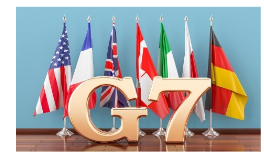
- The G7 is an intergovernmental organization established in 1975, with member countries including the UK, Canada, France, Germany, Italy, Japan, and the US.
- They address various global issues like economic governance, international security, and energy policy during their annual meetings.
- While the G7 doesn't have a formal charter or secretariat, the rotating presidency sets the agenda, and policy initiatives are developed by sherpas, ministers, and envoys ahead of the summit.
- These countries play significant roles in global trade, with the US and Germany being major exporters.
- In 2022, the G7 countries accounted for 30% of the global GDP, projected to decrease to 28% by 2027. Excluding the G7, the G20 countries are expected to contribute around 44.5% to the global GDP in 2027, marking a two-percentage-point increase from 2022.
Source: PIB
Cyclone Hamoon - Edukemy Current Affairs
In News
Hamoon cyclone exhibited a remarkable level of volatility by undergoing four category changes within a single day, making it the most unusual cyclone in the country in the past three decades.
About Cyclone Hamoon
- Cyclone Hamoon, a very severe Bay of Bengal cyclone, exhibited highly unusual behavior by changing categories four times within 24 hours before making landfall near Chattogram, Bangladesh.
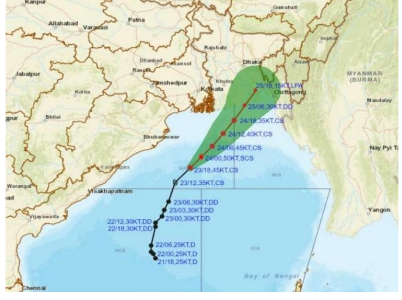
- This rapid transformation ranged from a cyclonic storm to a severe cyclonic storm, then to a very severe cyclonic storm, and finally back to a cyclonic storm.
- The unusual path of Hamoon, which moved towards Bangladesh instead of the expected coastal regions of Tamil Nadu, Andhra Pradesh, or Odisha, was influenced by upper-level westerly winds.
- These winds, which blow from west to east between 30- and 60-degrees latitude in both hemispheres, played a significant role in the cyclone's acceleration and deviation from its predicted course.
- Cooler sea temperatures in the northern Bay of Bengal contributed to Hamoon's rapid weakening as it moved away from the coast.
- The weakening of cyclone Tej in the Arabian Sea may have indirectly influenced Hamoon's strengthening in the Bay of Bengal, as twin cyclonic systems often exhibit interrelated behaviours.
Source: DTE
16th Urban Mobility India (UMI) Conference
In News
The 16th Urban Mobility India (UMI) Conference & Exhibition 2023, held in New Delhi from October 27th to 29th, was organized by the Ministry of Housing and Urban Affairs with support from Delhi Metro Rail Corporation Ltd.
About 16th Urban Mobility India (UMI) Conference
- The UMI Conference & Exhibition 2023 highlighted the significance of the National Common Mobility Card (NCMC) as a convenient payment method for commuters and discussed innovative funding approaches and public-private partnerships for urban transportation infrastructure.
- It stressed the need to transition to electric vehicles (EVs) to reduce emissions and encouraged investment in EV infrastructure.
- The event also recognized excellence and best practices in urban transport projects through awards in categories like Best Public Transport System, Most Innovative Financing Mechanism, and Best Green Transport Initiative.
What is National Common Mobility Card (NCMC)?
- The National Common Mobility Card (NCMC), known as 'One Nation One Card,' offers an inter-operable transport card for bus travel, tolls, parking, retail shopping, and cash withdrawals.
- It was introduced to enable seamless travel across various transport systems and retail shopping in India.
- The program, initiated by the Ministry of Housing & Urban Affairs, was developed by a committee comprising various organizations, including NPCI and CDAC.
- It is designed to promote digital payments, reduce costs, and provide valuable data insights for more efficient operations.
- This initiative marks India's capacity to produce indigenous gate and payment reader systems, aligning with international standards and reducing the cost of closed-loop card management.
Source: UMI
Candolleomyces Albosquamosus - Edukemy Current Affairs
In News
Scientists have discovered a previously unknown species of mushroom in the Western Ghats.
About Candolleomyces Albosquamosus

- Candolleomyces Albosquamosus is a unique mushroom species.
- Its name derives from its distinctive white, scaly appearance on its cap.
- Thriving in its natural forest habitat, this delicate mushroom displays an enchanting honey-yellow cap adorned with unique white woolly scale-like structures.
- It predominantly grows on dead logs and bamboo culms.
- This mushroom is a rare find, and its taxonomy and ecological role are still not fully understood.
- It has been spotted in some regions of India and other parts of Asia, typically in forested environments.
- However, its ecological significance and edibility remain subjects of research and exploration.
- The white scales covering its cap give it a distinct appearance, making it a noteworthy find for mycologists and those interested in mushroom diversity.
Source: TH
Limited Liability Partnership - Edukemy Current Affairs
In News
The government has imposed stricter regulations on Limited Liability Partnerships (LLPs).
About New Regulatory Framework
- New regulatory rules, called the Limited Liability Partnership (Third Amendment) Rules, 2023, issued by the Ministry of Corporate Affairs (MCA), have come into effect on October 28, 2023.
- These rules mandate that both new and existing LLPs must maintain a register of partners at their registered offices within 30 days of incorporation, promoting transparency in LLP operations.
- The register should include professional and personal information of partners, details of their contributions (tangible and intangible), and any updates.
- Partners without beneficial interests must declare this, while those with such interests must specify them.
- The development coincides with a surge in business incorporations in India, reflecting optimism about the business environment.
About LLP
- A Limited Liability Partnership (LLP) is a flexible and popular form of business structure that combines the limited liability benefits of a corporation with the operational flexibility of a partnership.
- In an LLP, partners are not personally liable for the debts and liabilities of the business.
- It provides a legal shield to individual partners, protecting their personal assets. LLPs are suitable for various professional services and small to medium-sized businesses.
- They offer the advantage of simplified compliance and a separate legal entity status while allowing partners to actively participate in the management of the business.
Source: ET
Aralam wildlife sanctuary - Edukemy Current Affairs
In News
Forest watchers in the Aralam Wildlife Sanctuary in Kerala were fired upon by individuals suspected to be Maoists.
About Aralam wildlife sanctuary
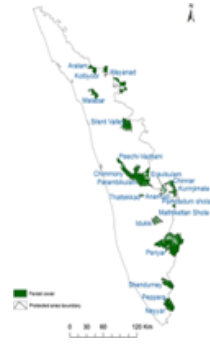
- Aralam Wildlife Sanctuary is located in the Indian state of Kerala.
- It covers an area of 55 square kilometers.
- The sanctuary is home to a variety of flora and fauna, including elephants, tigers, leopards, and various bird species.
- It offers opportunities for wildlife enthusiasts, trekkers, and nature lovers to explore its pristine natural beauty.
- The sanctuary is known for its dense forests and lush green landscapes, making it a popular destination for eco-tourism and wildlife conservation efforts.
UPSC Previous Year Questions
Prelims (2020)
Q. With reference to Indian elephants, consider the following statements:
- The leader of an elephant group is a female.
- The maximum gestation period can be 22 months.
- An elephant can normally go on calving till the age of 40 years only.
- Among the States in India, the highest elephant population is in Kerala.
Which of the statements given above is/are correct?
(a) 1 and 2 only
(b) 2 and 4 only
(c) 3 only
(d) 1, 3 and 4 only
Ans: (a)
Prelims (2020)
Q2. Which of the following Protected Areas are located in Cauvery basin?
- Nagarhole National Park
- Papikonda National Park
- Sathyamangalam Tiger Reserve
- Wayanad Wildlife Sanctuary
Select the correct answer using the code given below:
(a) 1 and 2 only
(b) 3 and 4 only
(c) 1, 3 and 4 only
(d) 1, 2, 3 and 4
Ans: (c)
Source: TH
Homi Jehangir Bhabha - Edukemy Current Affairs
In News
In Indore, the Raja Ramanna Centre for Advanced Technology (RRCAT) will commemorate the birth anniversary of Dr. Homi Jehangir Bhabha on October 30.
About Homi Jehangir Bhabha
- Homi Jehangir Bhabha, often referred to as the "Father of the Indian nuclear program," was an eminent Indian nuclear physicist.
- He served as the founding director of the Tata Institute of Fundamental Research (TIFR) and established the Atomic Energy Establishment, Trombay (now Bhabha Atomic Research Centre).
- Bhabha played a pivotal role in India's nuclear weapons development and received accolades like the Adams Prize and Padma Bhushan.
- He advocated for India's ambitious nuclear program and was instrumental in convincing leaders like Jawaharlal Nehru to pursue it.
- Under his guidance, India focused on harnessing thorium reserves for nuclear power, shaping the country's unique three-stage nuclear power program.
Source: FPJ
‘70-hour work week’ idea into perspective
Context: Infosys co-founder Narayana Murthy has recommended that Indian youth should adopt a 70-hour workweek to enhance the country's productivity. The proposal of a 70-hour workweek, equivalent to nearly 12 hours of daily work for six days, has elicited mixed reactions, receiving both support and criticism.
Current Scenario
- The 2019 Time Use Survey reveals that, on average, young Indians aged 15-29 work for approximately 7.2 hours a day in rural areas and 8.5 hours a day in urban areas.
- In urban Uttarakhand, the average working hours are notably high at 9.6 hours per day.
- However, these figures still fall significantly short of the 70-hour workweek suggested by Narayana Murthy.
Pros of long working hours
- India has a significant advantage with a young working-age population, making it crucial to harness their potential by encouraging long working hours to contribute to the nation's development.
- To achieve ambitious goals in a short time, India needs a transformation in work culture towards greater determination, discipline, and diligence.
- Historical examples from Germany and Japan demonstrate the benefits of long working hours in driving economic growth, which can be a model for India's progress.
- India's low work productivity needs improvement to compete on a global scale and make significant economic progress.
- Long working hours can also be allocated to personal skill development, ensuring that the additional time is dedicated to mastering expertise in one's chosen field.
Cons of long working hours
- Research consistently indicates a significant drop in productivity after 50 hours of work per week, which worsens beyond 55 hours. A lack of a full day off each week can further harm hourly output.
- Long work hours can lead to burnout, reduced job satisfaction, and disrupt the balance between work and personal life. Indians already spend less time on sports and leisure compared to Germany and Japan.
- Extended working hours can result in various health issues, including sleep disturbances, increased risk of cardiovascular diseases, obesity, and mental health problems like elevated stress levels, anxiety, and depression.
- Long working hours can be particularly challenging for working mothers, making it difficult to manage childcare responsibilities and potentially hindering their career progression.
How to achieve the Golden Mean of work-life balance?
- Utilize digital technologies and artificial intelligence to streamline processes and invest in technical education for the workforce.
- Productivity relies on the right tools and resources, not just time spent at work.
- Place youth in challenging roles that offer promising futures, fostering a culture of transparency and meritocracy.
- Allocate time for relaxation, exercise, hobbies, and spending time with loved ones, aiming for sufficient quality sleep each night.
Hard work forms the cornerstone of success, but it's more than just the hours clocked; it's the commitment and passion that truly count. The aim is to create a sense of satisfaction in one's work, enabling a seamless blend of professional and personal life. When young individuals are driven by purpose and enthusiasm, achieving a harmonious work-life balance becomes an organic result.
Source: TH
Share the article
Edukemy’s Current Affairs Quiz is published with multiple choice questions for UPSC exams
MCQ
Get Latest Updates on Offers, Event dates, and free Mentorship sessions.

Get in touch with our Expert Academic Counsellors 👋
FAQs
UPSC Daily Current Affairs focuses on learning current events on a daily basis. An aspirant needs to study regular and updated information about current events, news, and relevant topics that are important for UPSC aspirants. It covers national and international affairs, government policies, socio-economic issues, science and technology advancements, and more.
UPSC Daily Current Affairs provides aspirants with a concise and comprehensive overview of the latest happenings and developments across various fields. It helps aspirants stay updated with current affairs and provides them with valuable insights and analysis, which are essential for answering questions in the UPSC examinations. It enhances their knowledge, analytical skills, and ability to connect current affairs with the UPSC syllabus.
UPSC Daily Current Affairs covers a wide range of topics, including politics, economics, science and technology, environment, social issues, governance, international relations, and more. It offers news summaries, in-depth analyses, editorials, opinion pieces, and relevant study materials. It also provides practice questions and quizzes to help aspirants test their understanding of current affairs.
Edukemy's UPSC Daily Current Affairs can be accessed through:
- UPSC Daily Current Affairs can be accessed through Current Affairs tab at the top of the Main Page of Edukemy.
- Edukemy Mobile app: The Daily Current Affairs can also be access through Edukemy Mobile App.
- Social media: Follow Edukemy’s official social media accounts or pages that provide UPSC Daily Current Affairs updates, including Facebook, Twitter, or Telegram channels.

